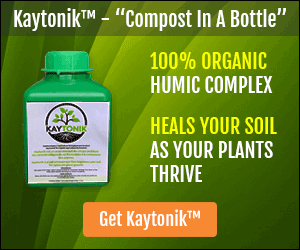Few years back, when I moved to this house, I made the commitment that my garden would be toxic-free. I had to find a way to grow beautiful plants without putting our health at risk. During my research I learned about soil health. I read as much as I could, and one of the books that was constantly suggested by online fellow gardeners was "Teaming with Microbes, a Gardener's Guide to the Soil Food Web" by Lowenfels and Lewis. Jeff Lowenfels and Wyne Lewis are avid gardeners in Alaska, USA, published this book in 2006 and a updated version in 2010. The book follows the teachings and research of Dr. Elaine Ingham.
Here is an honest review of the book – there are no affiliate links or anything like that—just a gardener wanting to help another gardener have the best soil health possible. As well, I also want to clarify, I’m neither a biologist, nor a soil scientist, but as an individual who cares for our planet and a gardener, I have applied these concepts and they work.
The authors, explain the soil food web and its impact on our garden in easy-to-read but very scientific packed information. The first part of the book is about soil microorganisms and soil health. They describe the role of these microorganisms in helping our plants to grow and introduce each one of them to us. The authors go in-depth to teach us about bacteria, fungi, nematodes, and protozoa. But they don't finish there, they also include all the other organisms, from arthropods to mammals, that interact in our gardens. Each one of them has an important part to play in our backyard and the health of our plants.
One of the things I really liked about the book, was how the writers were able to translate complex scientific information into easy-to-understand content. Understanding the basic of how the soil food web works and the impact on the plants is essential if we want to become better at gardening.
"Teaming with Microbes" explains the impact fertilizers, pesticides, and herbicides have on the soil food web and gives alternatives to avoid them. One of the alternatives they suggest is to focus on soil microbes. "Soil bacteria and fungi are like small bags of fertilizer, retaining in their bodies nitrogen and other nutrients they gain from root exudates and other organic matter. (...) Carrying on the analogy, soil protozoa and nematodes act as 'fertilizer spreaders' by realizing the nutrients locked up in the bacteria and fungi 'fertilizer bags'" (1). Our job is to feed these soil dwellers with organic matter!
The book's second part gives 19 rules to build healthy soil using the principles we learned in part one. In this section, the authors discussed the use of several soil amendments, from compost to mulch. They also give clear instructions if you want to make your own compost tea!
Also in the second part, you can learn how to make a soil trap, which will help you discover some of the larger creatures that are living within your soil. The writers provide instructions on how to make a Berlese funnel to collect and study the smaller, soil-dwelling creatures. At a minimal cost, this simple test will help you evaluate your soil. This book will be a great reading during the winter months. And by the time spring is here, you will be ready to start feeding the microbes in your garden! (1) Teaming with Microbes, page 22















